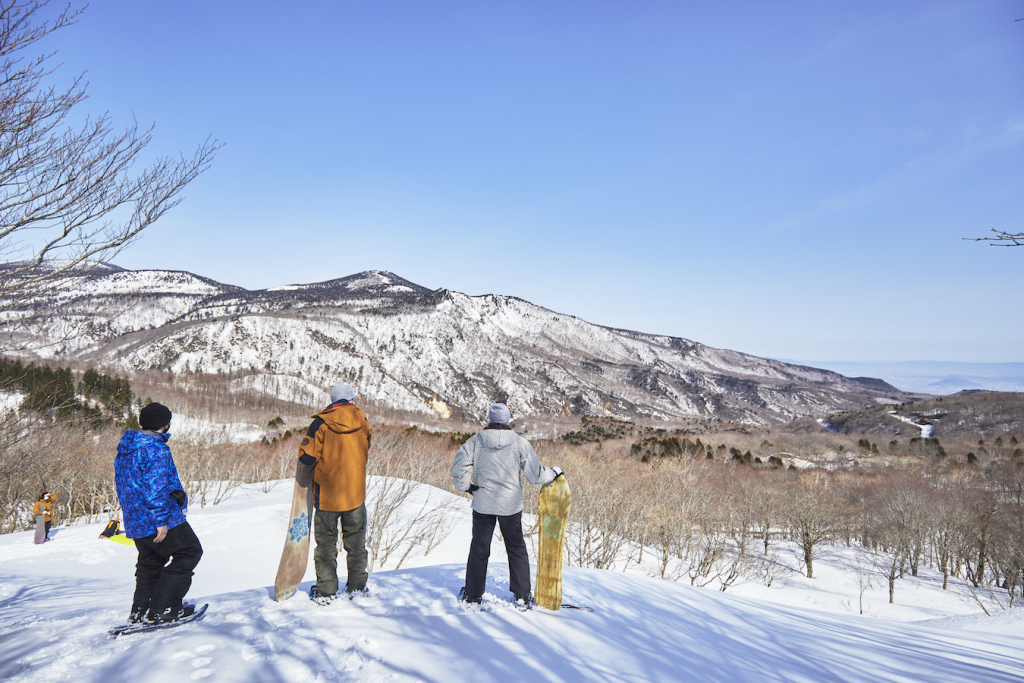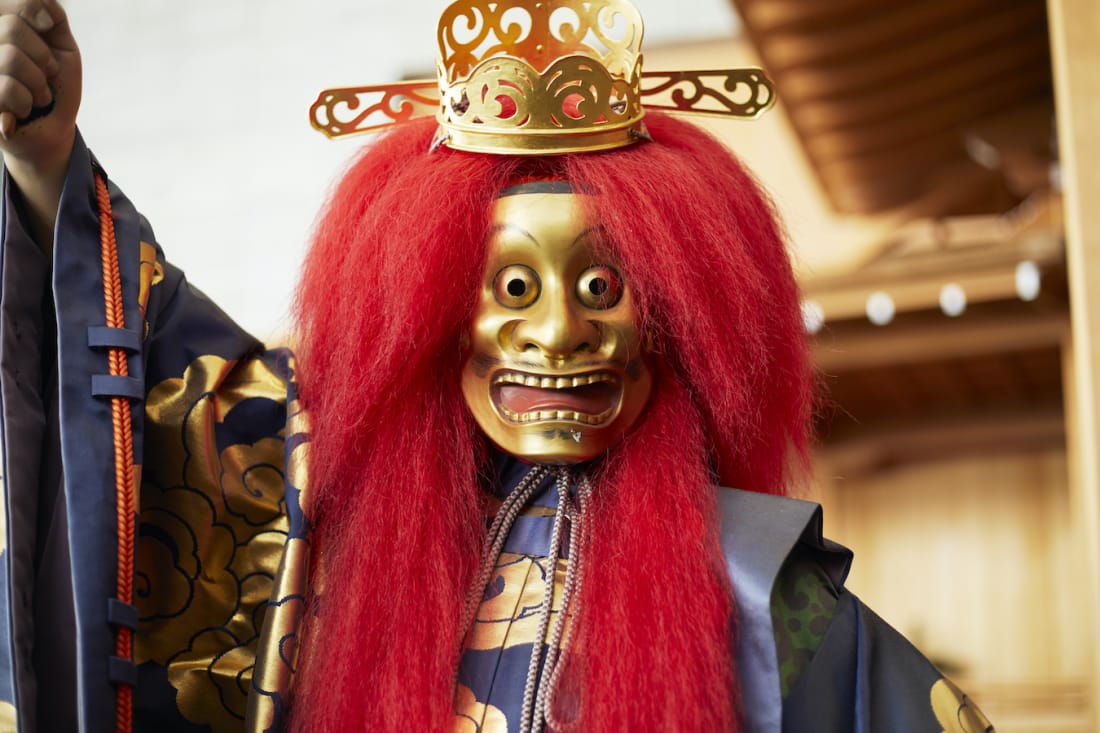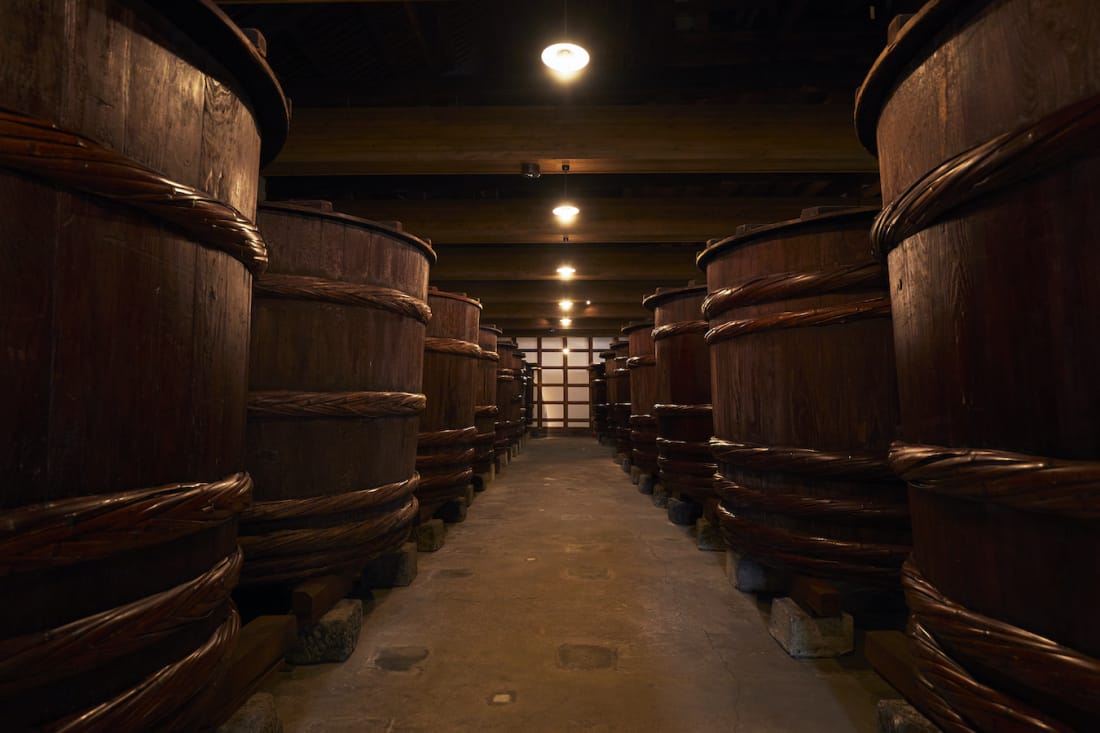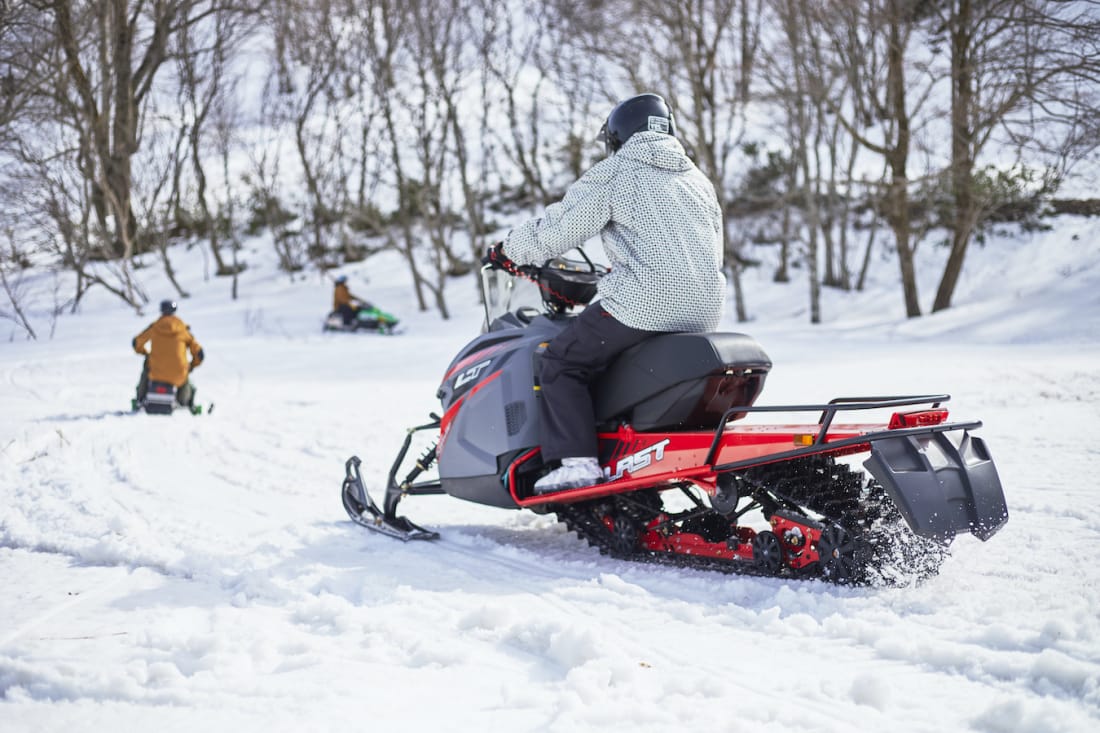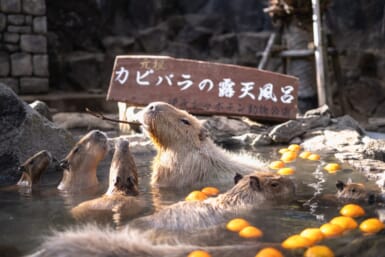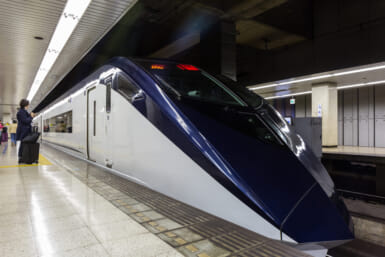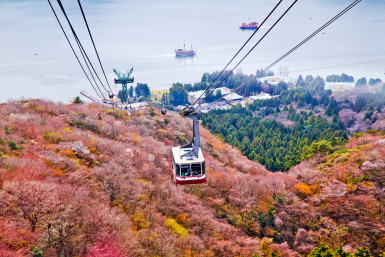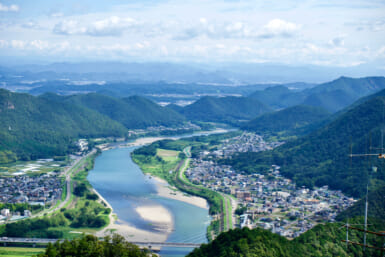Just over two and half hours away from Tokyo on the Shinkansen, the two connecting prefectures in Tohoku boast some of the best powder snow in the country, which can be savored while taking in the breathtaking views of the Azuma Mountain range – a family of roughly 2,000-meter-tall, imposing-looking active volcanoes. It truly is a magnificent sight that hit us soon after arriving in Yonezawa and remained prominent throughout our stay.
Day One
The first destination following our arrival at Yonezawa Station was Uesugi Shrine, the former grounds of Yonezawa Castle (burned down in 1873), which was built in honor of highly revered daimyo, Uesugi Kenshin. Two very enthusiastic guides dressed in samurai attire showed us around the extensive grounds, stopping at various monuments along the way including a statue of the ninth daimyo of the Yonezawa domain, Uesugi Yozan who John F. Kennedy once described as the Japanese politician he respected the most.
After a brief look around Yonezawa City Uesugi Museum, which exhibits various national treasures including Kano Eitoku’s masterpiece screen painting, “Rakuchu rakugai zu,” it was time for lunch at Uesugi Hakushakutei. The former residence of Yonezawa domain’s last daimyo, it was a gorgeous setting to enjoy a sumptuous feast of local fresh vegetables and Yonezawa beef – one of the three best Wagyu brands in Japan. What made the socially distanced meal even better was the stunning view of the Hama-rikyu-landscaped garden covered in snow.
With our stomachs full it was then back into the car for a 40-minute drive uphill to Tengendai Kogen ski resort where we had a chance to experience Yonezawa’s puffy, weightless snow. As with Hokkaido you can enjoy a long ski season (from early December to mid-May) here. The amazing conditions are due to the extremely cold winds from Siberia that migrate down. Not as well-known as many of the resorts in Japan’s northernmost island, Tengendai Kogen is a bit of a hidden gem where you can see some snow monkeys if you’re lucky.
Though the ski area is quite narrow, it isn’t a location that gets overcrowded so there’s always plenty of space available for skiers and snowboarders to enjoy the courses that run between 1,350 and 1,820 meters. As well the popular winter sports, there are other activities available including a guided tour of the resort in a large red truck-like vehicle which is a great way to get panoramic views of the Azuma mountain range.
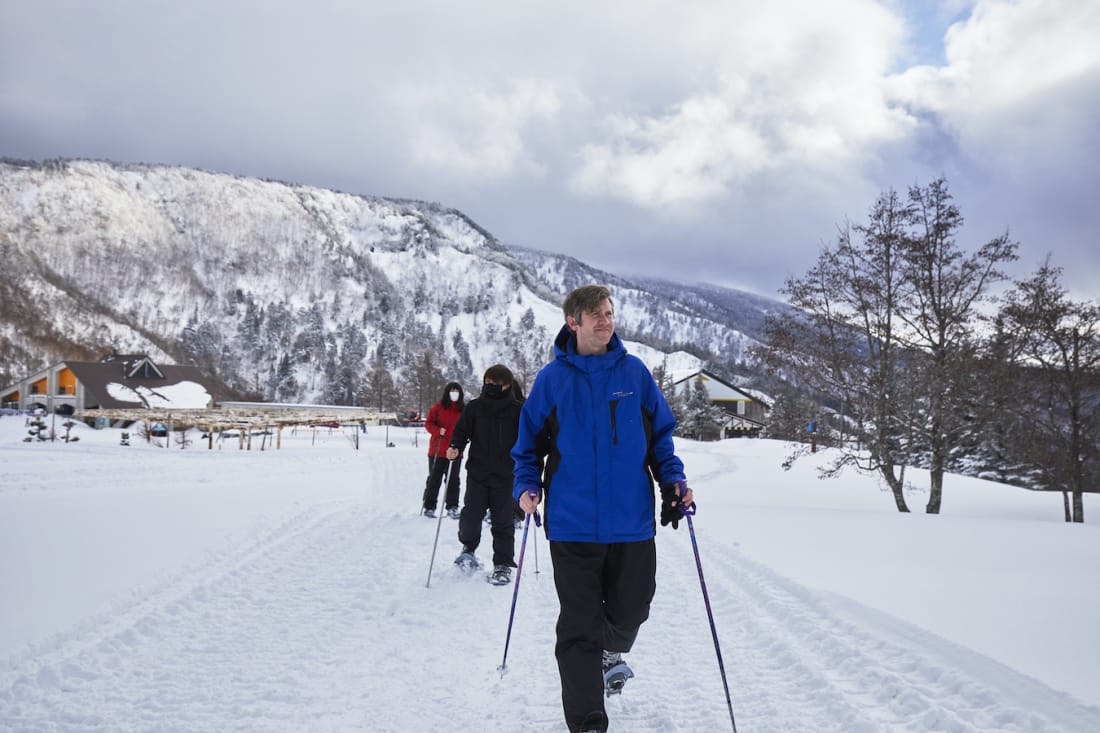
Another option is snowshoeing. This is a great choice for those looking for a slower-paced snow adventure. It provides an opportunity to explore scenic and mostly untouched terrain that would usually be out of reach. It is a pleasurable trek suitable for people of all ages in shoes that are quite comfortable once you get used to them. It would have been nice to have had a little longer there, but with the ski lift closing at 4pm, it was time to head to Shirabu Onsen Nishiya, our hotel for the evening.
Located nearby in the quaint hot spring village of Shirabu, Nishiya is a rustic thatched-roof lodge built more than 100 years ago. The onsen itself, which dates back more than seven centuries, is famed for its rich sulphury water which has numerous health benefits, but be warned, at just under 60 degrees Celsius, it is not for the faint-hearted. A very traditional inn, it’s ideal for those looking for an authentic ryokan experience during their stay in Yonezawa.
Day Two
The second morning began with a trip to Toko no Sakagura, a sake brewery-turned museum founded in 1597 to cater to the Uesugi clan. One of very few breweries permitted to continue producing sake during the prohibition period of the Edo era, there is a very historic feel to the place, and it was no surprise to hear that it had been used as a location for several movies. The friendly couple running the place gave us a tour of the different rooms including the fermentation chambers, though, the highlight was the sake tasting at the end, particularly the Toko Junmai Daiginjo Fukuro-tsuri (drip sake) and the Toko Ginjo Plum Sake.
Our time in Yonezawa finished with a hearty ramen meal at the popular Kashuku-ya restaurant before we got back on the road to move to Fukushima. It took around one hour to get to our first destination, the 800-year-old temple Nakano Fudouson. Hidden away in the mountains, the vivid red colors of the main building create a striking contrast to the surrounding greenery and the gushing waterfall in the background. Below the temple we had the opportunity to wander through the mysterious Okunoin (inner sanctuary) Caves, home to statues of 36 deities.
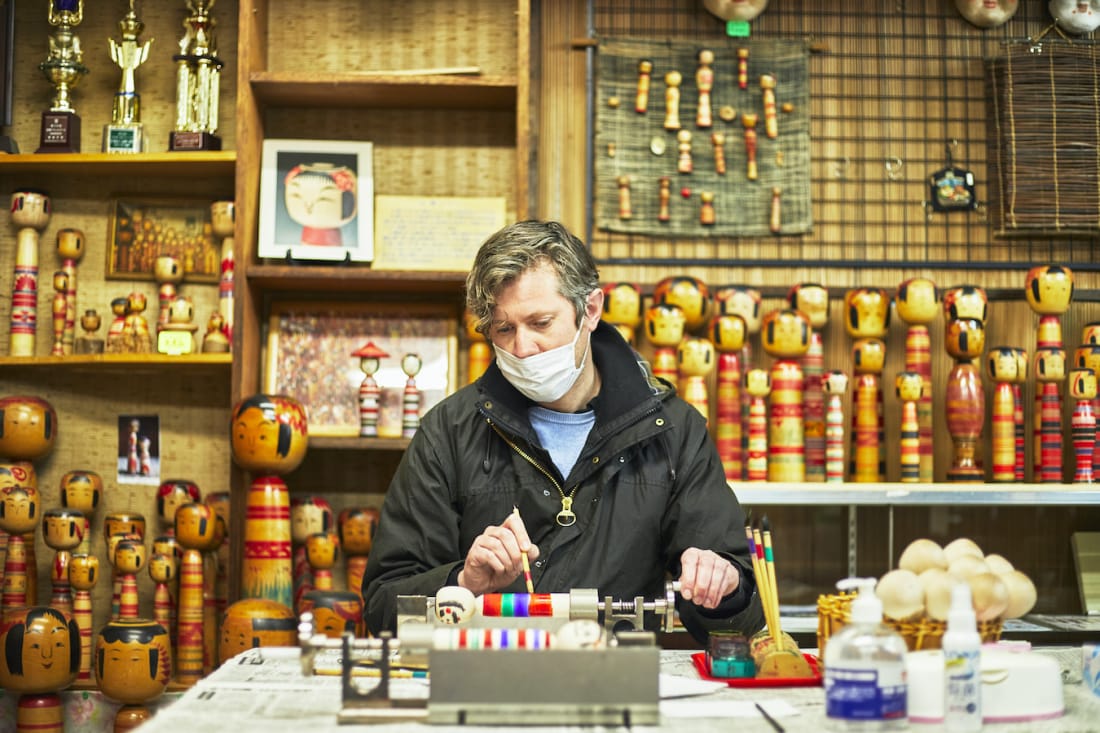
Next up was Tsuchiyu Onsen, a charming hot spring resort with several ryokan and hotels as well as four free ashi-yu (foot baths) dotted around the area. In addition to the healing water, the region is known for producing unique kokeshi dolls with long cylindrical striped bodies and small heads that have black circles around the crown. At Matsuya Bussan you can paint your own dolls alongside a patient teacher. If it doesn’t turn out how you intended, there are plenty of other souvenirs on sale at the shop.
Tsuchiyu’s a pleasant place to stroll around with several stores well worth visiting. Orara no Komise for instance is an intriguing café where you catch your own prawns and cook them on the grill yourself. Rich and crispy, they go down very well with the homemade amazake (sweet sake) and cider. At Cafe Gensenyuan Moriyama there is an amazing selection of puddings and a friendly owner who went out of her way to make us feel welcome. We finished a wonderful day by trying some of the region’s famous soba at Hisago followed by a soothing hot spring bath at Yumori, a relaxing and accommodating hostel with an open kitchen.
Day Three
The final day of the tour was all about the snow. We arrived at the Washikura hot spring resort relatively early in the morning where we were met by our guide, Mr. Taira. He first gave us an introduction to Channel Square, a company that has been holding various sports, culture and music events since the Great East Japan Earthquake and Tsunami in 2011. He then gave us a rundown of our course for the day that would include some snow trekking, powder surfing, extreme sledding and a ride in a snowmobile.
We began with a trek up Washikura Mountain, which wasn’t overly taxing but did prove to be a good aerobic workout as you must lift your legs higher than when running. The best thing about it was the fact that we had the whole mountain to ourselves. The views were spectacular, particularly of the rugged Mount Bandai, known as the Mount Fuji of Aizu. Taking a break from the hike, Taira gave us some coffee and chocolate biscuits to enjoy while savoring the majestic sight ahead.
With our batteries recharged, the next activity on the list was powder surfing using what’s known as a snurfer. The predecessor to the snowboard, it’s basically, a wide and short mono-ski with no binding and a lanyard attached to the rear. Having never surfed, snowboarded or been on a skateboard before, it took a little getting used to but was a lot of fun and going quite slowly, it didn’t hurt when hitting the floor. Taira accommodates the activities to suit the skill levels of the group members so it’s no problem for beginners.
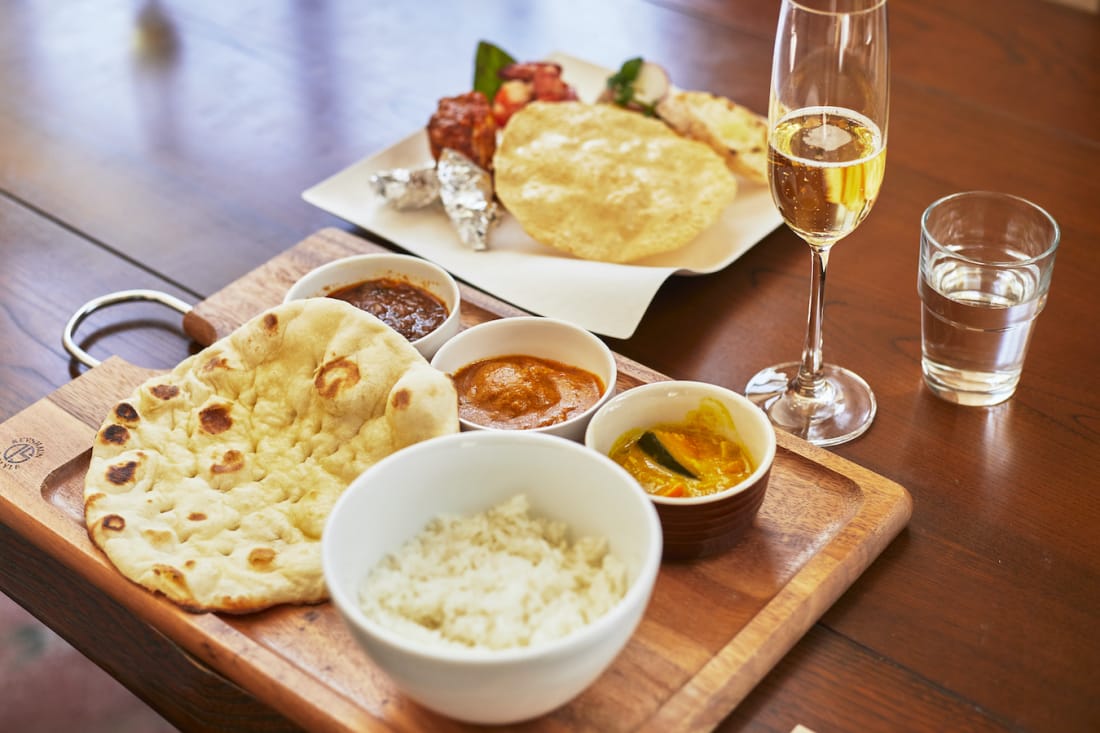
The day package also includes a fine meal from Emu Curry Dining Bar featuring tandoori chicken, naan, rice and fresh, locally sourced vegetables. Completely stuffed, we then had a short break before going on the snowmobiles in the afternoon. This is an exciting experience that is a bit like riding a motorbike. We had an enthusiastic teacher run us through the basics before going around on the beginner’s course. It felt great, but what was even more thrilling was when our instructor took us through the woods on his bigger snowmobile. With sharp turns and undulating slopes, it felt like we were on a ride at a fairground.
In the final hour, participants are free to practice what they like, whether that be powder surfing, riding on the snowmobile or trying some extreme sledding. Overall, it was quite a physically exerting day of activities, so it was nice to finish off with an outdoor hot spring back at the complex. Wanting to relax even more, we finally moved to Noji Onsen Hotel, our accommodation for the night. A terrific location 1,200 meters above sea level, it has six kinds of natural hot spring baths that we enjoyed after a heavenly course dinner. It was the perfect way to end what had been a wonderful three days in Tohoku.
Sponsored Post

